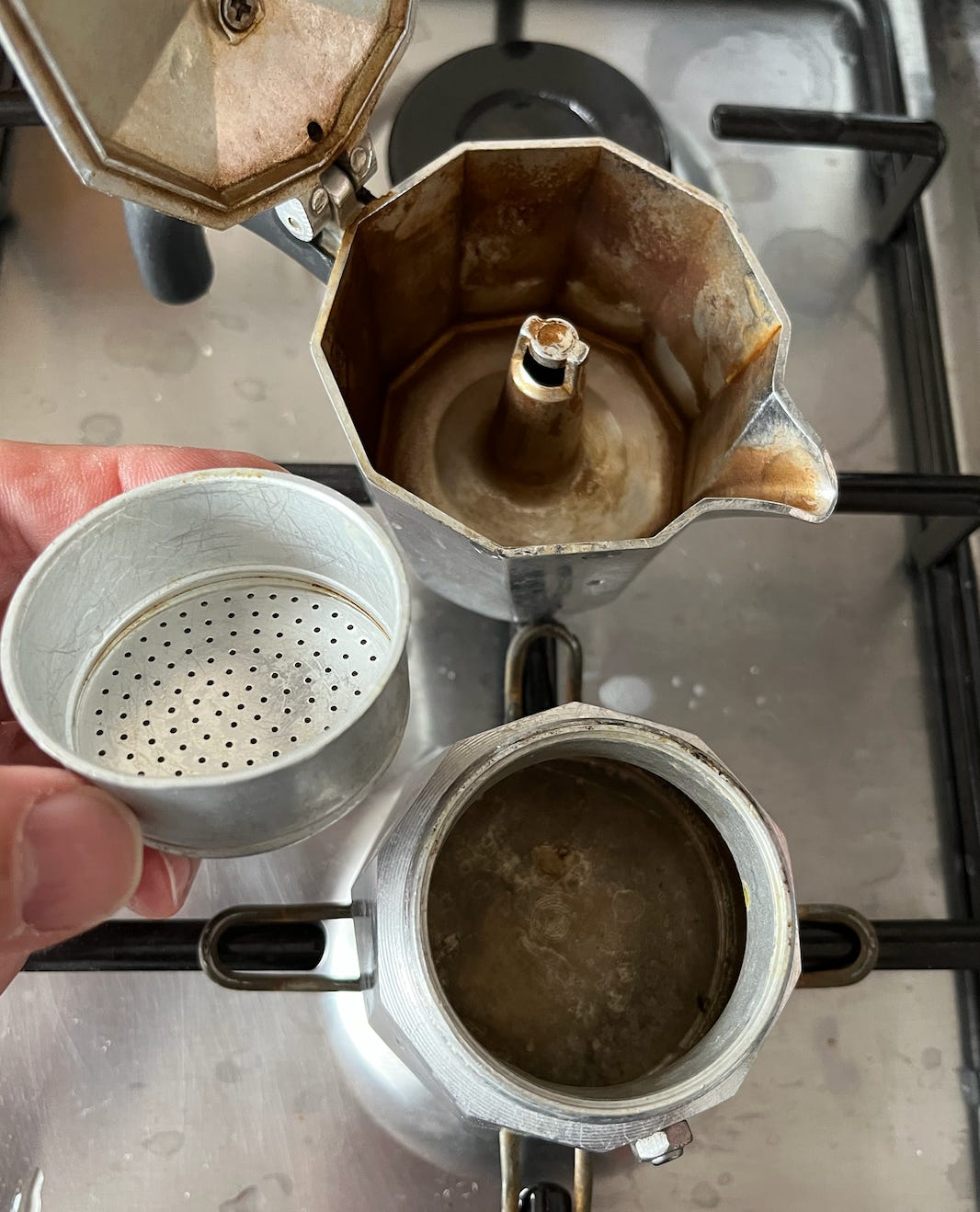In Italy, and most of Europe — southern Europe, anyway — they don’t do coffee the way we do in the States. We have Mr. Coffee Machines that drip hot water through coffee grounds into a pot. In European places where they have similar setups, like England, they generally brew it much stronger than we do, and then add lots of milk.
Places like Italy (and France, and Spain, and Portugal) do espresso — pressurized steam pushed through packed grounds into a small but mighty cup. Sometimes they add steamed milk (latte or cappuccino), and sometimes they water it down into a larger and less potent drink, for weak Americans, called an Americano, a style that came about during WWII when American GIs stationed in Italy found espresso too strong.
To my knowledge, most people here don’t have espresso machines at home, but many use a stove-top Moka pot, which is kind of like an upside down espresso machine, with no pump. You put the grounds — not packed — onto the filter of a funnel-shaped cup, set that in the base that’s full of water, and then screw on the top, which has a filter on the bottom and a spout in the middle.

When you put that on the stovetop, the water boils and pushes the steam up through the narrow part of the funnel, through the filter and then through the coffee, through the other filter that keeps the grounds in the lower portion, and up into the spout, where it condenses to hot coffee, and can be poured out into cups. (You can also put sugar in the top part to make a Cubano, like Mike passes out at the market on Saturdays. Thanks, Mike!)
While this is a great way to enjoy coffee, it’s kind of a single note, which brings us to the fancy coffee makers. They’re like a Keurig, but able to make hotter, stronger coffee, using pressurized water. I dislike pods, but these are much smaller than K-cups, and many are recyclable or compostable. Lots of different machines that require different sized pods, of course. One of the most popular all over Europe is Nespresso, perhaps because George Clooney did a big advertising campaign a while back, and also Lavazza, which is based in Torino. And others, all with different pods.
Since I don’t have to buy an oven (hooray!) I decided to splurge on a coffee machine, and I bought a Nescafé Dolce Gusto. Before I got to Italy I was thinking about a Lavazza, but there seems to be more coffee from more brands (including Lavazza!) made for the DC. Also important is the manual control, which allows for a small strong espresso or a tall longer-to-enjoy Americano, as well as hot or cold. They even make pods that produce cappuccinos and macchiatos.
So I can make a traditional Moka coffee, or a fancy espresso, but there is also a community of Slow Food coffee aficionados here, and I want to learn what I can for them. Eventually, then, I will have to get a French press and a grinder, I think.
###






It was suggested to me that the Moka pot needs some "elbow grease," and I did give it a light wash. But I should have mentioned the "stains" are a patina, a bonding of the coffee oils with the metal, which builds over time and prevents the coffee from acquiring a metallic taste from the aluminum. In fact, (I just looked this up), some Italians make several pots of coffee in a new Moka pot, and dump them out, before they make a pot to drink.
Tom, a former co-worker, never washed his coffee cup, just rinsed it out. He said it tasted better, and perhaps that was true, maybe more for not ever having soap in it than for anything to do with a ceramic flavor. We will not judge Tom here.